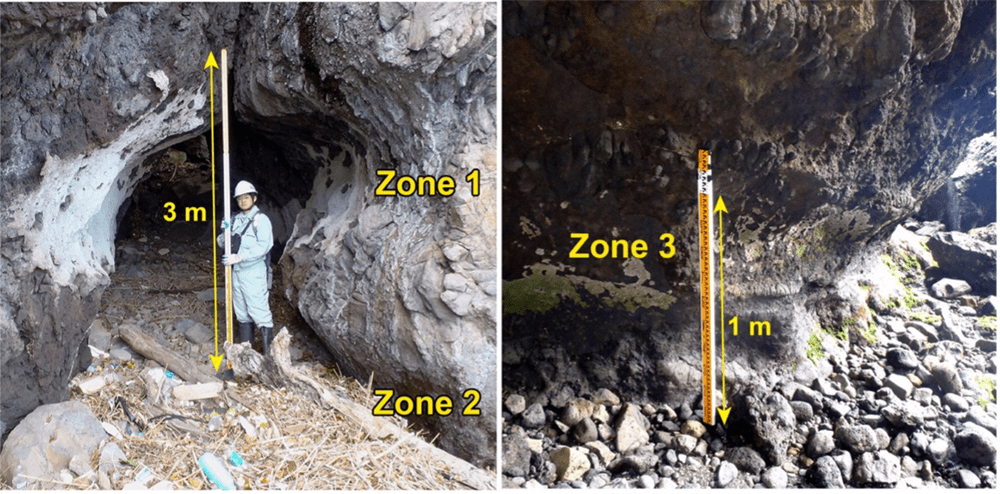History of past magmatic activity from uplift traces in the Higashi-Izu area
Summary of the AIST Press Release on August 31, 2023,
>>Japanese
A research team consisting of Masanobu Shishikura, Yuichi Namegaya (Geological Survey of Japan), Hiroyuki Kaneko (Ito City Board of Education), and Masato Koyama (Shizuoka University) found evidence of past uplifts in the Higashi-Izu area, central Japan (Figs. 1 and 2). Along the coast around Ito City in the Higashi-Izu monogenetic volcano field, barnacles, tube worms, and other calcareous organisms that are normally attached to rock reefs around mean sea level were observed at higher elevations. They were distributed in at least three vertical zones between elevations ranging up to 3.5 m above mean sea level, suggesting that the ground was uplifted approximately 1.1 m in about the 7th century (Zone 1), 1.3 m in about the 15–16th century (Zone 2), and 0.8 m after the 19th century (Zone 3). Although present in only limited locations, uplift traces dated to approximately 3,000 years ago were also found at a higher elevation of 4.2 m. Instrumental observation data over the past 100 years revealed that the cause of the latest uplift event was magma activity accompanied by earthquake swarms, mainly in the 1930s, 1970s, and 1990s. The magmatic activity was also the likely cause of the older events, especially the oldest event at 3000 years ago, which coincides with the eruption of Kawagodaira volcano, the largest eruption in the Higashi-Izu area. These results indicate that the eastern part of the Izu Peninsula began to uplift at least 3,000 years ago, initiated by the eruption of the Kawagodaira volcano and that intermittent magma intrusion has occurred every 400 to 800 years for the past 1,500 years. The timing of each uplift event is also close to the timing of the occurrence of major interplate earthquakes along the Sagami Trough (such as the 1923 Taisho Kanto Earthquake) and active faults (such as the Kita-Izu Fault Zone that caused the 1930 Kita-Izu Earthquake), indicating the possibility of a correlation between volcanic and seismic activity in the eastern Izu Peninsula and Sagami Bay area. The findings of this study provide important information for earthquake and volcanic disaster prevention in the Higashi-Izu area and the southwestern Tokyo metropolitan area. The details of this study have been published in Tectonophysics (DOI: 10.1016/j.tecto.2023.229985).
Fig. 1 Location and tectonic setting of the survey area.
Fig. 2 Photographs of uplift traces of calcareous organisms on the coast of Ito City.
These figures have been modified from those in the original publication (Shishikura et al., 2023; CC BY 4.0).



